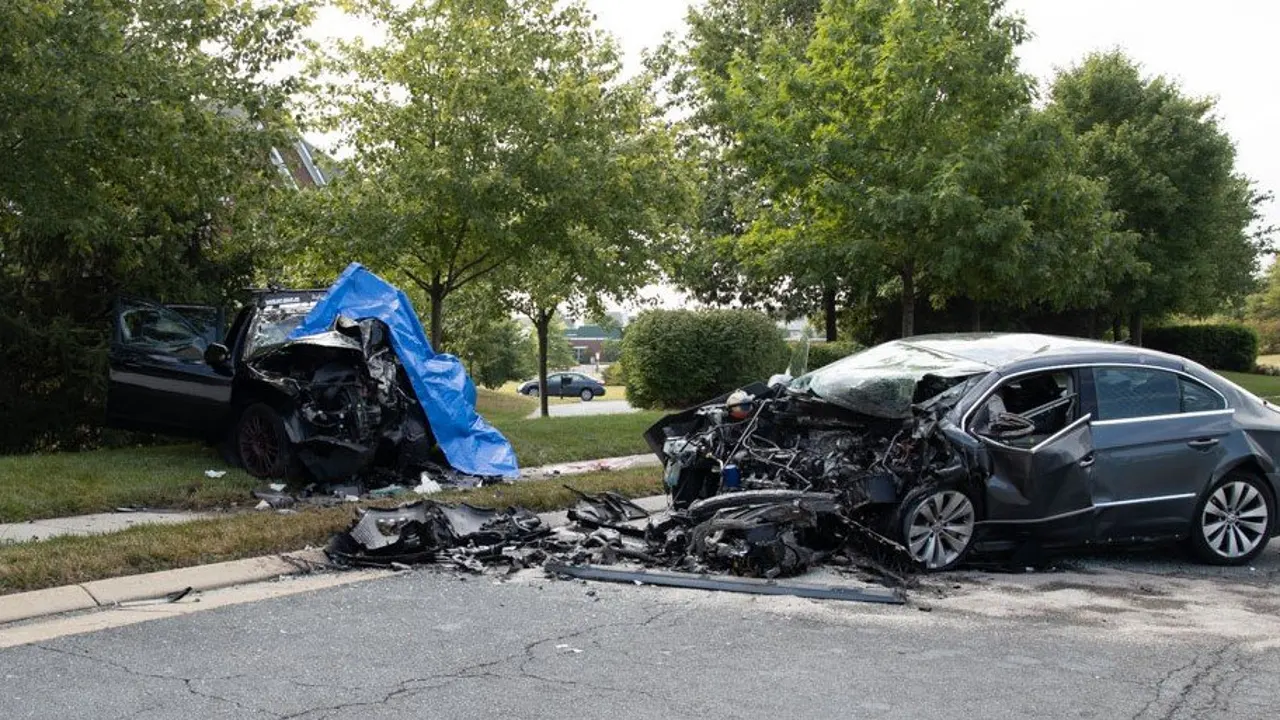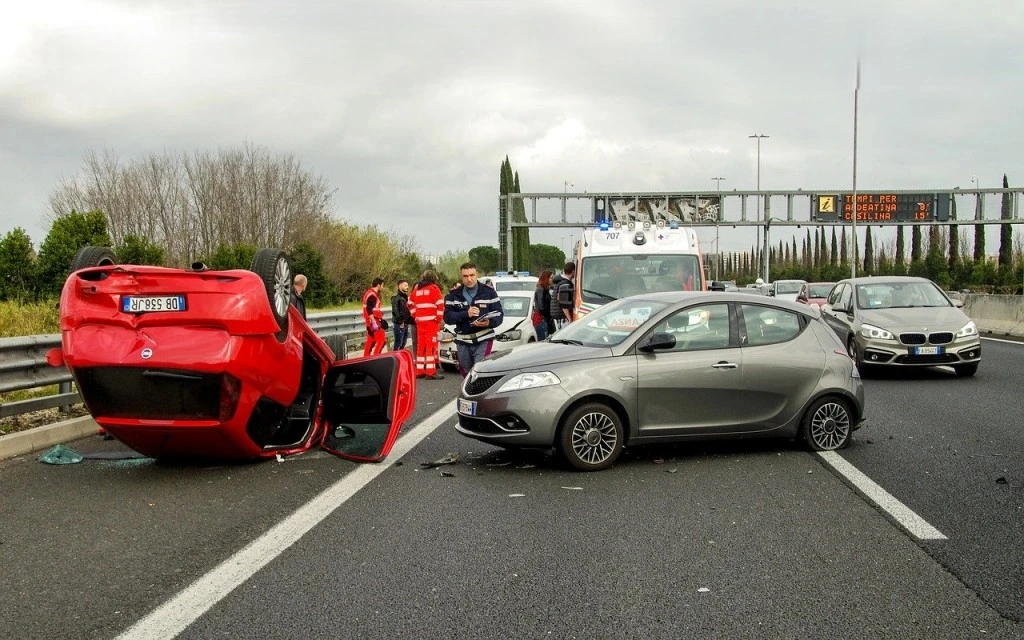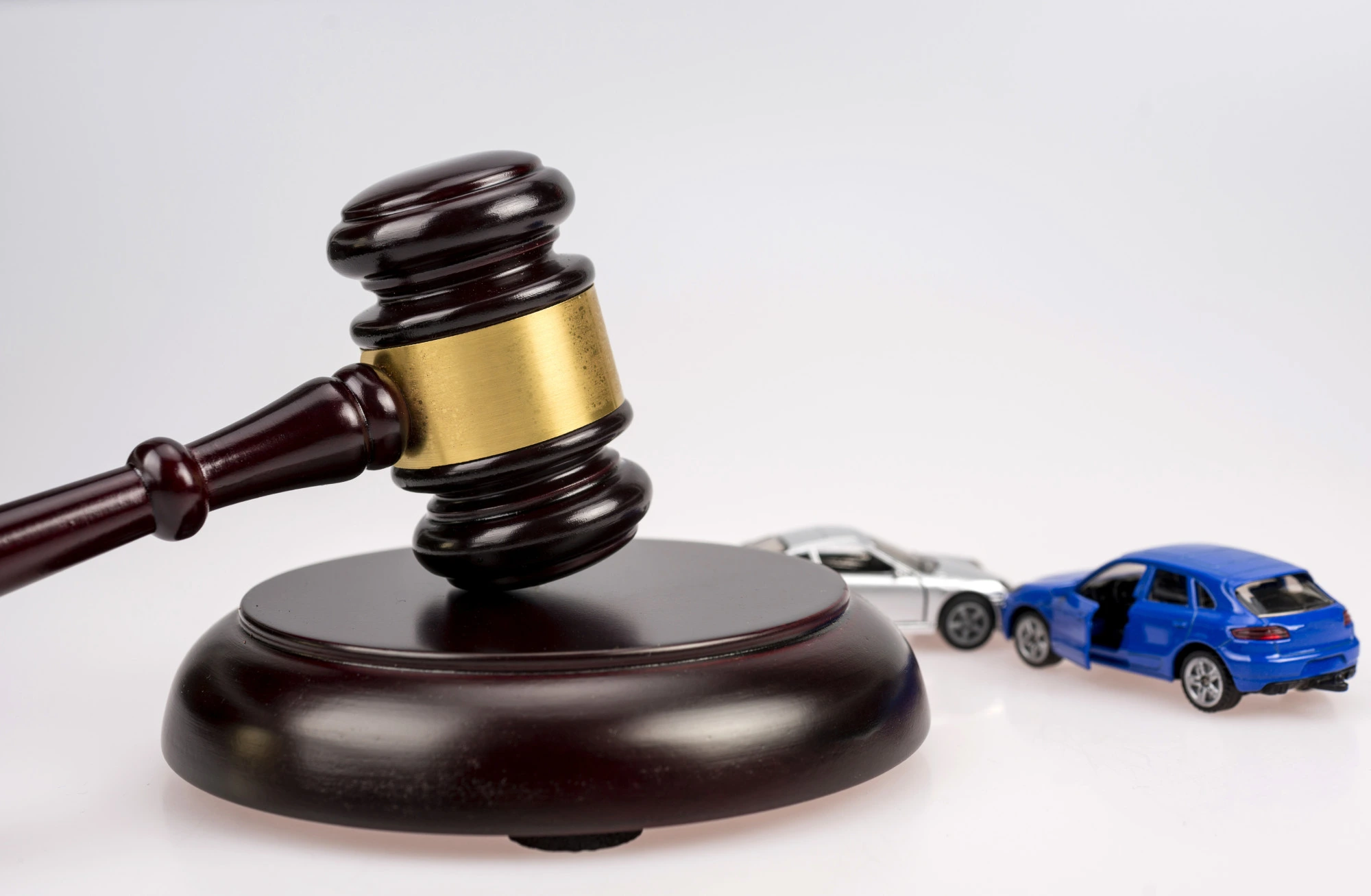Non-injury car accidents in Virginia, while less severe than those involving physical harm, present significant financial and logistical challenges. These incidents, often minor collisions resulting in property damage like dented bumpers or scratched fenders, are common across the Commonwealth, with over 120,000 vehicle crashes reported annually.
For many Virginians, navigating the aftermath of a fender-bender involves grappling with insurance claims, legal nuances, and repair logistics. The average settlement for a non-injury car accident in Virginia typically ranges from $2,000 to $5,000 for minor collisions, though extensive damage can push settlements to $10,000 or more. This comprehensive guide explores the factors influencing these settlements, Virginia’s legal framework, and strategic steps to maximize compensation, equipping claimants with the knowledge to secure fair outcomes.

Table of Contents
- Defining Non-Injury Car Accidents: Scope and Characteristics
- Virginia’s Legal Framework for Property Damage Claims
- The Settlement Process: A Step-by-Step Guide
- Factors Influencing Settlement Amounts
- Average Settlement Expectations in Virginia
- Strategies to Maximize Your Settlement
- Common Pitfalls to Avoid
- Practical Tips for Post-Accident Management
- Conclusion: Navigating Non-Injury Claims with Confidence
Defining Non-Injury Car Accidents: Scope and Characteristics
A non-injury car accident, often referred to as a “property damage only” claim, involves a collision where no party sustains physical injuries. Common scenarios include low-speed rear-end collisions in parking lots, sideswipes on busy highways like I-64, or misjudged merges on Route 288. According to Virginia traffic statistics, these incidents account for approximately 40% of annual crashes, reflecting their prevalence in urban centers like Richmond and rural areas alike.
The financial scope of these claims focuses on economic losses: vehicle repairs, towing fees, rental car expenses during downtime, and diminished vehicle value due to a crash history. Unlike injury claims, which involve medical bills and pain-and-suffering calculations, non-injury cases are streamlined, centering on tangible costs. However, claimants must remain vigilant. Even minor discomfort post-accident warrants a medical evaluation to rule out latent injuries, which could shift the claim into a more complex category. Understanding this distinction ensures a focused approach to securing compensation for property damage.
Virginia’s Legal Framework for Property Damage Claims
Virginia’s legal system governs non-injury car accident claims with a framework that emphasizes accountability and precision in fault determination. As an at-fault state, Virginia places financial responsibility on the negligent driver, distinguishing it from no-fault jurisdictions like neighboring Maryland. Below, we delve into the key legal principles shaping these claims.
At-Fault System: Establishing Liability
Virginia’s pure at-fault system mandates that the driver responsible for the accident bears the cost of damages through their liability insurance. When fault is clear, the at-fault driver’s insurer covers repairs, towing, and related expenses, streamlining the process for the claimant. This system contrasts with no-fault models, where personal insurance often covers initial damages regardless of fault. Accurate fault determination, supported by evidence like police reports or witness statements, is critical to unlocking full compensation.
Contributory Negligence: A Stringent Barrier
Virginia’s adherence to the contributory negligence doctrine, shared by only four other states, sets a high bar for recovery. If a claimant is found even 1% at fault, for instance, hesitating at a traffic light or failing to signal promptly, they are barred from recovering any damages. This rule, rooted in 19th-century tort law, can nullify claims for significant losses, such as a $4,000 repair bill, if partial blame is assigned. A 2024 Fairfax County case illustrated this, where a driver lost a $5,200 claim due to a minor traffic violation deemed contributory. To counter this, claimants must compile robust evidence, photographs, dashcam footage, and detailed incident logs, to establish the other party’s sole liability.
Accident Reporting Requirements
Virginia Code § 46.2-371 requires reporting accidents to law enforcement if property damage exceeds $1,500, involves towing, or impacts public infrastructure, such as guardrails or signs. For damages below $1,500, parties must exchange contact and insurance information, with hit-and-run incidents carrying misdemeanor or felony charges depending on damage value. Filing a police report, while not mandatory for all cases, strengthens claims by providing an official fault assessment. Additionally, submitting a DMV Form SR-1 within five days for reportable accidents creates a formal record, reducing disputes during insurance negotiations. These requirements underscore the importance of procedural compliance to support a claim’s validity.
This legal framework demands precision and foresight, ensuring claimants approach the process with a clear understanding of their rights and obligations.
The Settlement Process: A Step-by-Step Guide
Securing a fair settlement for a non-injury car accident in Virginia requires a methodical approach, typically spanning 2-6 weeks, though fault disputes can extend timelines. Below is a detailed roadmap of the process.
Immediate Post-Accident Actions
The first hour after a collision is pivotal. Ensure safety by moving vehicles to a secure location and activating hazard lights. Document the scene comprehensively: photograph vehicle damage, road conditions, traffic signals, and license plates. Exchange contact and insurance details with the other party, avoiding discussions of fault to prevent statements that could be used against you. For accidents meeting reporting thresholds, notify law enforcement to generate an official report. Contact your insurer within 24 hours to initiate the claim process, providing initial details to facilitate subrogation if you’re not at fault. These steps establish a strong foundation for your claim.
Filing the Claim
Submit your claim to the at-fault driver’s insurance company, providing critical documentation: the police report, photographic evidence, and a repair estimate from a certified shop. Virginia’s minimum liability coverage for property damage, increased to $20,000 in 2025, typically covers most non-injury claims. Insurers assess damages using tools like CCC One, calculating costs for parts, labor, taxes, and ancillary expenses. Expect an initial settlement offer within days, often conservative to allow room for negotiation. Ensure all expenses, such as towing or rentals, are included to reflect the full scope of your losses.
Negotiating the Settlement
Negotiation is a critical phase where preparation pays dividends. Initial offers may undervalue damages, for example, $2,000 for a $2,800 repair estimate, reflecting insurers’ strategy to minimize payouts. Counter with evidence, such as multiple repair quotes or itemized cost breakdowns, to justify a higher amount. If disputes persist, invoke the policy’s appraisal clause, where each party appoints an appraiser to agree on damages or an umpire resolves disagreements, with costs split. Once a settlement is reached, funds are typically disbursed within 7-10 days. Avoid signing releases prematurely, as they are legally binding and may limit further claims. This phase rewards persistence and clarity, ensuring compensation aligns with actual losses.
This structured process transforms a potentially chaotic experience into a manageable resolution, provided claimants act decisively and document thoroughly.

Factors Influencing Settlement Amounts
Settlement values for non-injury car accidents vary based on several key factors, each requiring careful consideration to set realistic expectations.
Extent of Vehicle Damage
The primary determinant of settlement value is the cost of repairs. Minor damage, such as scratches or bumper dents, typically ranges from $500-$1,500. Moderate damage, including dented panels or broken headlights, falls between $2,000-$4,000. Severe damage, such as frame misalignment or structural issues, can exceed $10,000. Vehicle type significantly impacts costs, luxury models like BMWs require pricier OEM parts, while older vehicles are capped at their actual cash value (ACV). Claiming diminished value, where a vehicle’s resale value drops post-repair, can add 10-20% to settlements, provided pre-accident condition is documented via tools like Carfax.
Fault Determination
Clear liability ensures full recovery, but contested fault reduces leverage. Virginia’s contributory negligence rule heightens this risk, as any shared blame nullifies claims. Objective evidence, traffic camera footage, witness statements, or event data recorders, strengthens fault arguments. For example, a clear video showing the other driver running a red light can secure a $4,000 settlement, while ambiguity may lead to prolonged disputes and reduced offers.
Insurance Policy Limits
The at-fault driver’s policy sets a ceiling on recovery. Virginia’s $20,000 minimum liability typically suffices, but inadequate coverage limits payouts. If damages exceed the policy, for instance, $25,000 on a $20,000 limit, claimants may pursue the driver’s personal assets, though this is often impractical. Claimants with collision coverage can bridge gaps, subject to deductibles. Verifying the at-fault driver’s coverage early, through your insurer, mitigates shortfalls.
Ancillary Costs
Additional expenses significantly impact settlements. Towing fees range from $100-$300, while rental cars cost $30-$60 per day, often for up to 30 days during repairs. Storage fees for impounded vehicles can accrue rapidly. These costs can increase settlements by 20-50%, pushing a $3,000 repair claim to $4,500. Virginia law mandates reimbursement for “reasonable” expenses, but claimants must provide receipts to substantiate these costs.
Regional Variations
Settlement amounts vary by region due to differences in labor and parts costs. Urban areas like Northern Virginia (Fairfax, Arlington) see higher averages ($3,000-$6,000) due to elevated shop rates, while rural regions like Southwest Virginia average $1,500-$3,000. These variations reflect local economic factors and repair market dynamics.
These factors collectively shape settlement outcomes, requiring claimants to address each methodically to maximize compensation.
Average Settlement Expectations in Virginia
Based on aggregated claims data, the average settlement for non-injury car accidents in Virginia ranges from $2,500 to $4,500. In urban centers, settlements trend higher ($3,000-$6,000), while rural areas see lower averages ($1,500-$3,000). Approximately 60% of claims settle below $3,000, covering minor repairs, while 30% fall between $3,000-$7,000 for moderate damage. The top 10% exceed $10,000, typically involving high-value vehicles or complex repairs. Legislative changes in 2025, increasing liability minimums, have driven a 10-15% uplift in averages, reflecting broader coverage compliance.
These benchmarks provide a starting point, but actual settlements depend on case-specific factors. For instance, a 2024 Roanoke fender-bender yielded $2,200, while a 2025 Alexandria multi-vehicle incident secured $8,500, including towing and rental costs. Understanding these ranges helps claimants set realistic expectations while advocating for fair compensation.
Strategies to Maximize Your Settlement
Maximizing compensation requires proactive measures to strengthen your claim. The following strategies enhance outcomes:
Comprehensive Documentation
Compile a robust evidence portfolio, including photographs, repair estimates, rental receipts, and maintenance records. Use digital tools to timestamp and organize data, creating a compelling case for full reimbursement. A well-documented claim reduces disputes and strengthens negotiations, ensuring all losses are accounted for.
Multiple Repair Estimates
Obtain quotes from several certified repair shops to establish a fair damage value. Presenting higher estimates, for example, $3,200 and $3,100 versus a $2,800 offer, encourages adjusters to align with market rates. This approach can boost settlements by 20-30%, as insurers respond to competitive pricing.
Professional Assistance
For claims exceeding $5,000 or involving fault disputes, consult an attorney. Operating on contingency fees (typically 33% of the settlement), attorneys leverage legal expertise to increase payouts by 25-40%, particularly in navigating Virginia’s contributory negligence challenges. Even a free consultation can clarify potential pitfalls, enhancing claim strategy.
Pursuing Diminished Value
Claiming diminished value, where a vehicle’s resale value drops post-repair, can add significant value. For example, a $20,000 car may lose $1,000-$2,000 in market value after a crash. Documenting pre-accident condition with maintenance records or appraisal reports strengthens this claim, compelling insurers to include it in settlements.
These strategies empower claimants to secure compensation that fully reflects their losses, transforming a challenging process into a rewarding one.

Common Pitfalls to Avoid
Several missteps can undermine a claim’s success. Admitting fault at the scene, even casually, can be recorded and used to deny compensation. Failing to report the accident or file a DMV Form SR-1 risks claim denial due to lack of official documentation. Accepting initial offers without negotiation often leaves significant value unclaimed, as insurers routinely lowball to test resolve. Delaying medical evaluations may introduce injury claims, complicating the process. Overlooking diminished value or signing premature releases can forfeit rightful compensation. Finally, neglecting ancillary costs like towing or rentals reduces the settlement’s scope. Vigilance and thoroughness mitigate these risks, ensuring a robust claim.
Practical Tips for Post-Accident Management
Beyond the claim process, managing the aftermath of a non-injury accident involves practical steps to minimize disruption. Select a reputable repair shop certified by organizations like ASE to ensure quality work and accurate estimates. Coordinate with your insurer to approve rental car durations, opting for economy models to align with “reasonable” cost standards. Keep a detailed log of all communications with insurers, repair shops, and law enforcement, as this timeline can resolve disputes later. If repairs are delayed, negotiate with the shop to waive storage fees, as these can accrue rapidly. These measures streamline recovery and reduce out-of-pocket expenses.
Conclusion: Navigating Non-Injury Claims with Confidence
Non-injury car accidents in Virginia, while less complex than injury cases, demand careful attention to legal, procedural, and financial details. With average settlements ranging from $2,500 to $4,500, and potentially higher for significant damages, claimants can achieve fair outcomes by mastering the at-fault system, avoiding contributory negligence pitfalls, and documenting losses meticulously. By following a structured process, leveraging evidence, and employing strategic advocacy, you can transform a disruptive incident into a manageable resolution.
For complex or high-value claims, consulting a legal professional is advisable to navigate Virginia’s stringent legal landscape. With informed action and persistence, you can secure the compensation you deserve, restoring financial stability and peace of mind.
Latest Posts
Understanding the Average Settlement for Non-Injury Car Accidents in Virginia: A Comprehensive Guide
Non-injury car accidents in Virginia, while less severe than those involving physical harm, present significant financial and logistical challenges....
Uninsured Motorist Accidents in Virginia: Your Comprehensive Guide to Protection and Justice
You're cruising along Virginia's scenic Route 81, the Blue Ridge Mountains framing your view, when suddenly - crash! A reckless driver swerves into your...
